UPI Lite plays a key role in the digital economy by enabling real-time, small-value transactions and efficiently handling millions of daily UPI payments within the set UPI transaction limit per day. Ensuring reliability, speed, and zero downtime through effective performance testing and load testing is essential.
Using tools like JMeter, Gatling, and K6, combined with cloud performance testing and CI/CD pipeline automation, helps optimize UPI Lite’s scalability and user experience. This guide explains how to achieve seamless, high-volume UPI transactions with robust testing and monitoring.
💡Here’s what you’ll learn:
📌 Why performance testing is vital for seamless UPI Lite transactions and zero downtime.
📌 Key UPI Lite performance metrics and how to monitor them effectively.
📌 Common challenges in high-volume UPI Lite environments and how to tackle them.
📌 Load testing tools and best practices for scalable UPI systems.
📌 Strategies and automation tools to ensure zero downtime and smooth releases.
Introduction to UPI Lite and Its Role in Digital Payments
UPI Lite enhances India’s digital payments platform by enabling fast, offline micro-transactions without PINs. Guided by international best practices and shares certain digital-payment principles with CBDC frameworks, it supports wallet-based payments, Mobile Money Payments and reduces merchant discount rates for small-value transactions.
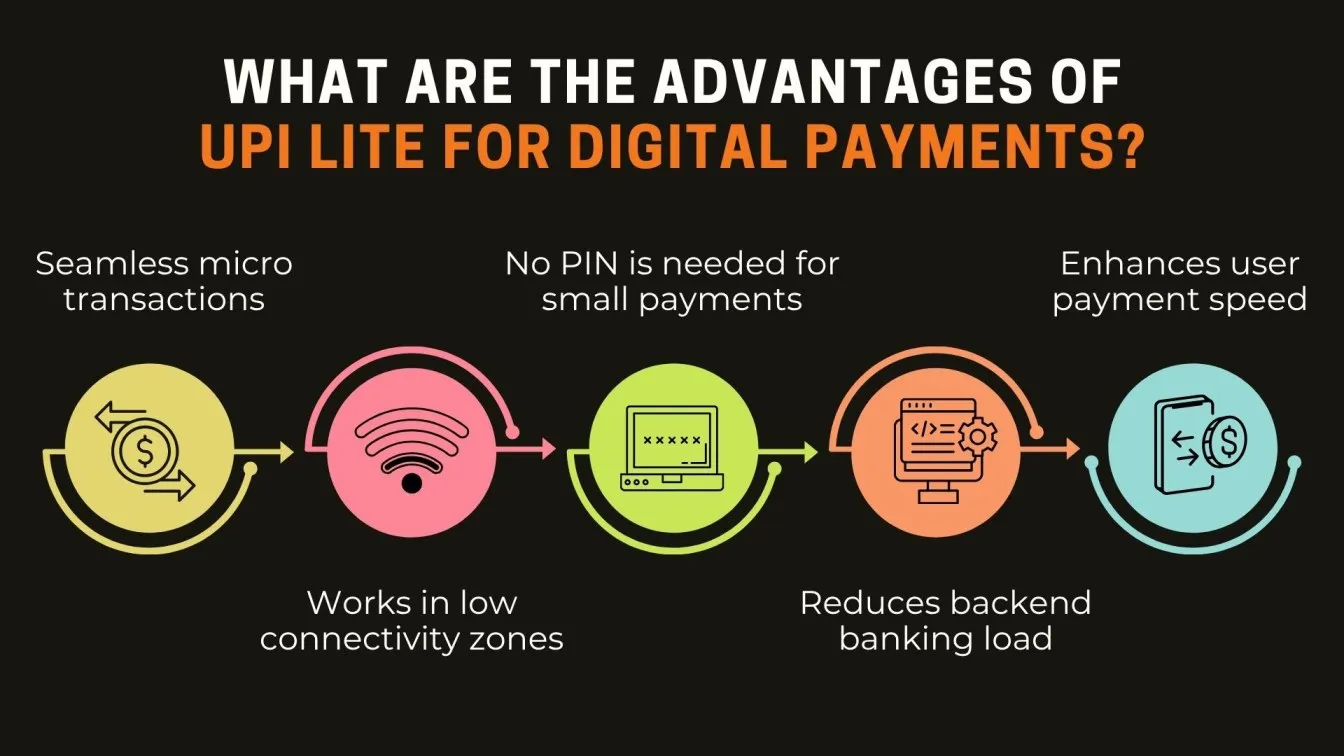
UPI Lite offers a streamlined, efficient solution to support frequent, low-value digital payments, especially in areas with limited connectivity and growing transaction demands.
- What is UPI?
- A real-time payment system that facilitates interbank transactions was created by NPCI(National Payments Corporation of India).
- What is UPI Lite?
- UPI Lite is a simplified version for low-value transactions, especially in poor connectivity areas.
Enhancing UPI Payment Efficiency with UPI Lite
- Reduces dependency on core banking systems for each transaction.
- Enables faster processing for frequent, everyday purchases.
- Eliminates transaction delays caused by network or bank server downtimes.
- UPI transaction limit per day for Lite is designed to support small, repeated transactions.
- UPI payment systems now see billions of transactions monthly, increasing the need for a scalable architecture.
- Tools like UPI QR code generators and UPI ID systems improve user convenience.
- Growing UPI transaction limits increase pressure on infrastructure.
- Users rely on services like UPI customer care numbers during failures, reinforcing the need for reliable performance.
UPI Lite is transforming digital payments by delivering fast, low-value transactions with enhanced reliability, even in low-connectivity zones.
Why Performance Testing Is Critical for UPI Lite Systems
Performance testing ensures that UPI Lite can manage growing transaction volumes and capacity without experiencing any issues. Tools like JMeter, Gatling, and k6, combined with CI/CD pipelines, support Third-party payment providers and Prepaid Payment Instruments in minimizing transaction failures and ensuring accurate bank balance and transaction times.
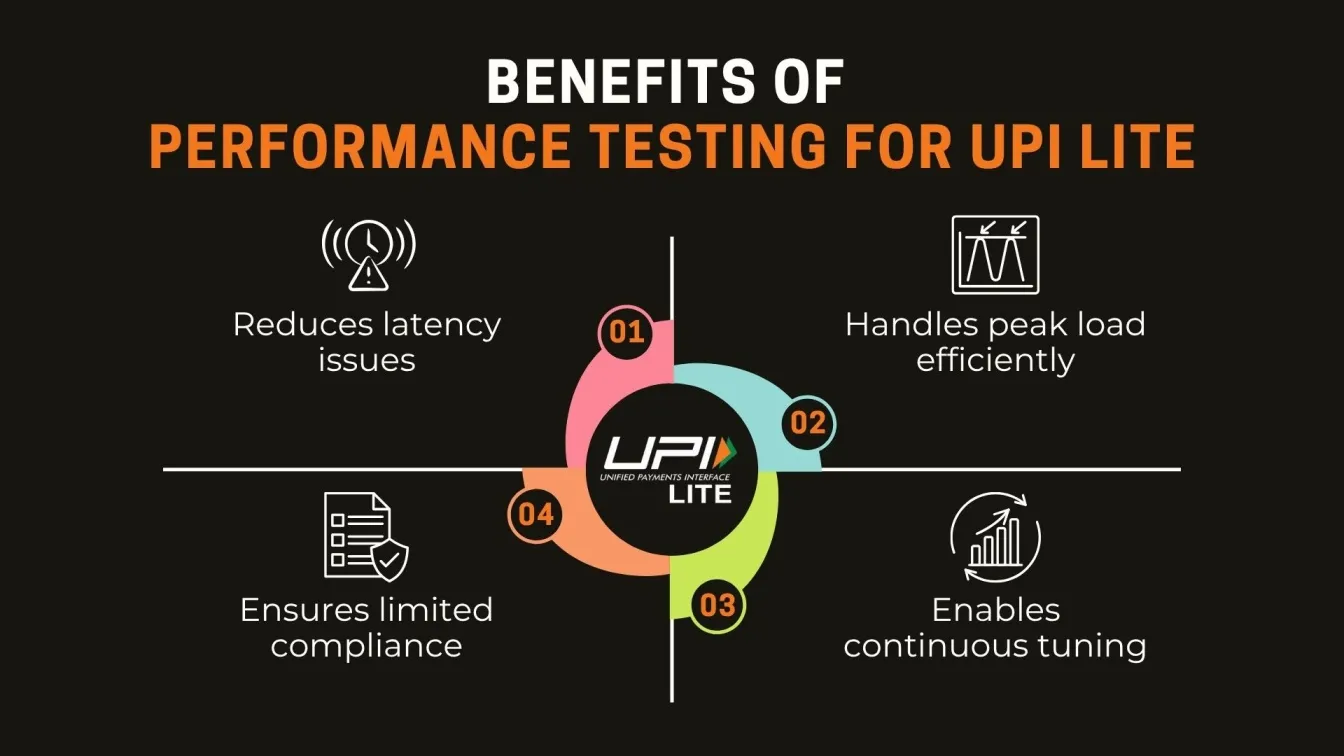
How Performance Testing Services Optimize UPI Lite Under Real-World Conditions?
- Verifies software performance testing thresholds under expected and unexpected traffic.
- Prevents downtime during peak hours (e.g., sales, bill payments, government disbursals
- Identifies infrastructure bottlenecks early, reducing time-to-resolution.
- Guarantees zero downtime by proactively validating system response under load.
- Supports evolving UPI payment demand and upi transaction limits.
- Measures system behavior under multiple types of performance testing such as:
- Load testing
- Stress testing
- Endurance testing
- Utilizing performance testing services determines how real-world variables (connectivity, device type, concurrency) affect UPI Lite performance.
- Helps implement cloud performance testing to simulate distributed users.
- Enables robust performance testing tools integration for CI/CD.
- Reduces the risk of failed application performance testing during rollouts or upgrades.
Performance testing guarantees that UPI Lite can manage large transaction volumes with no failures and little delay.
Understanding Core Performance Metrics for UPI Lite
Tracking key metrics like TPS and latency ensures UPI Lite’s fast, reliable digital payments in the UPI Circle. Supported by Bank of India and Payment Service Providers, it enables high transaction volumes, QR Code payments, UPI AutoPay, and offline payments, promoting financial inclusion and aligning with Digital Rupee innovations.
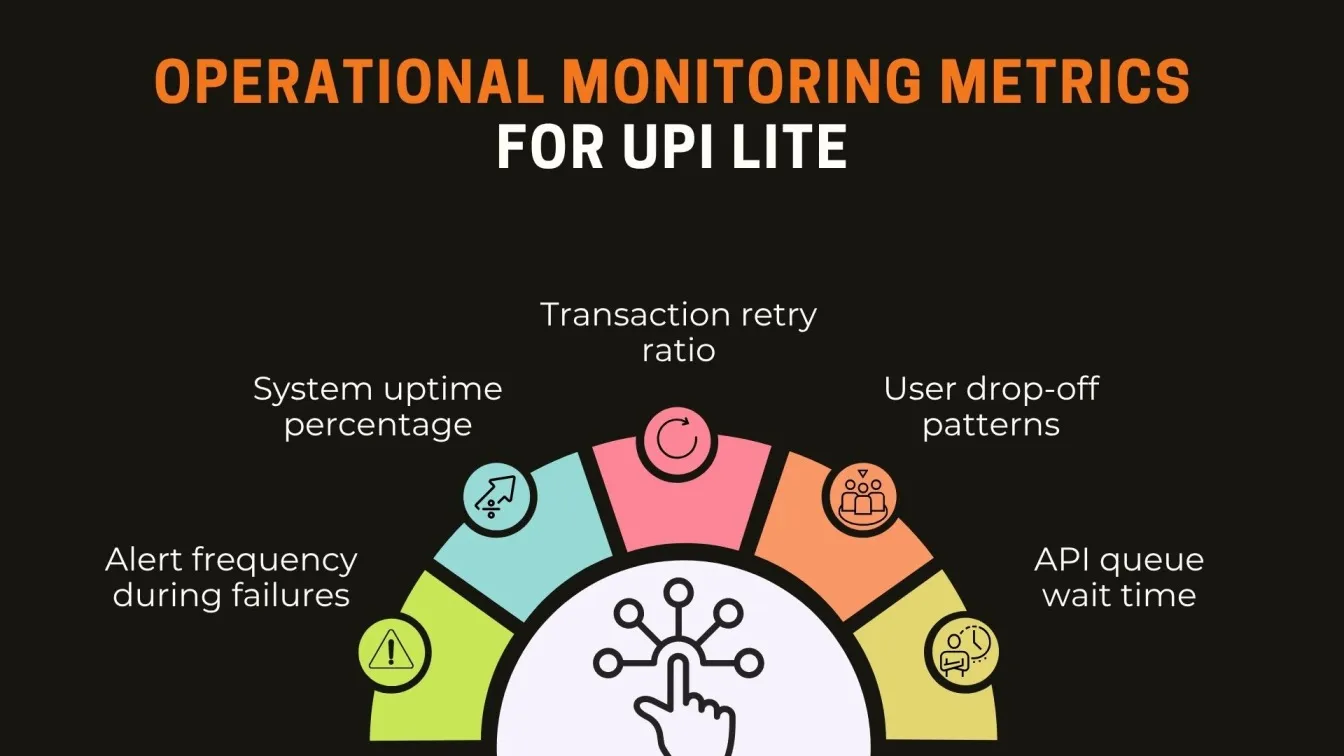
Tracking the right metrics is essential for actionable insights:
- Transactions Per Second (TPS): Measures throughput under varying loads.
- Latency: Critical for ensuring sub-second responses during micropayments.
- Error Rate: Identifies network, app, or server failures.
- System Resource Utilization: CPU, memory, and I/O usage trends.
- API Response Time: This is especially important for API performance testing.
- Success Ratio: Consistency in completing UPI Lite transactions successfully.
- Network Performance Testing Software: Key to handling variable user environments.
- Monitoring Transaction Drops: Helps identify scalability ceilings.
- Average and Peak Response Times: Guide infrastructure upgrades.
- Real-Time Dashboards: Visualize live system health.
Monitoring UPI Lite performance metrics like TPS, latency, and success rate ensures reliable digital payments and supports financial inclusion at scale.
Key Challenges in High-Volume UPI Lite Transaction Environments
UPI Lite faces challenges like API bottlenecks, bank system limits, and transaction failures under high transaction capacity. Third-party payment providers and cross-border payments add complexity, making robust load testing and network testing essential to prevent delays and manage transaction IDs and interchange rates efficiently.

Handling high-volume UPI Lite transactions in real-time introduces several challenges:
- Spikes in concurrent micro-payments lead to delayed processing.
- Bank servers experiencing lags during upi transaction limit stress events.
- Synchronization failures due to poor API throughput.
- Lack of robust real time performance monitoring affecting incident response.
- The infrastructure is not tuned for zero downtime migration.
- Limited fallback support for network testing in rural or mobile-heavy regions.
- The lack of scalability testing tools prevents dynamic scaling.
- Delayed alerting from outdated or disconnected real time transaction monitoring dashboards.
Overcoming UPI Lite’s scalability challenges requires real-time monitoring, dynamic load testing, and CI/CD-driven infrastructure optimization.
Load Testing UPI Lite: Tools, Approach, and Best Practices
Load testing is vital to ensure UPI Lite performs reliably under peak transaction loads. Using popular tools like JMeter, Gatling, and Azure Load Testing, combined with API load testing and continuous integration via CI/CD pipeline tools, helps validate system scalability and stability.
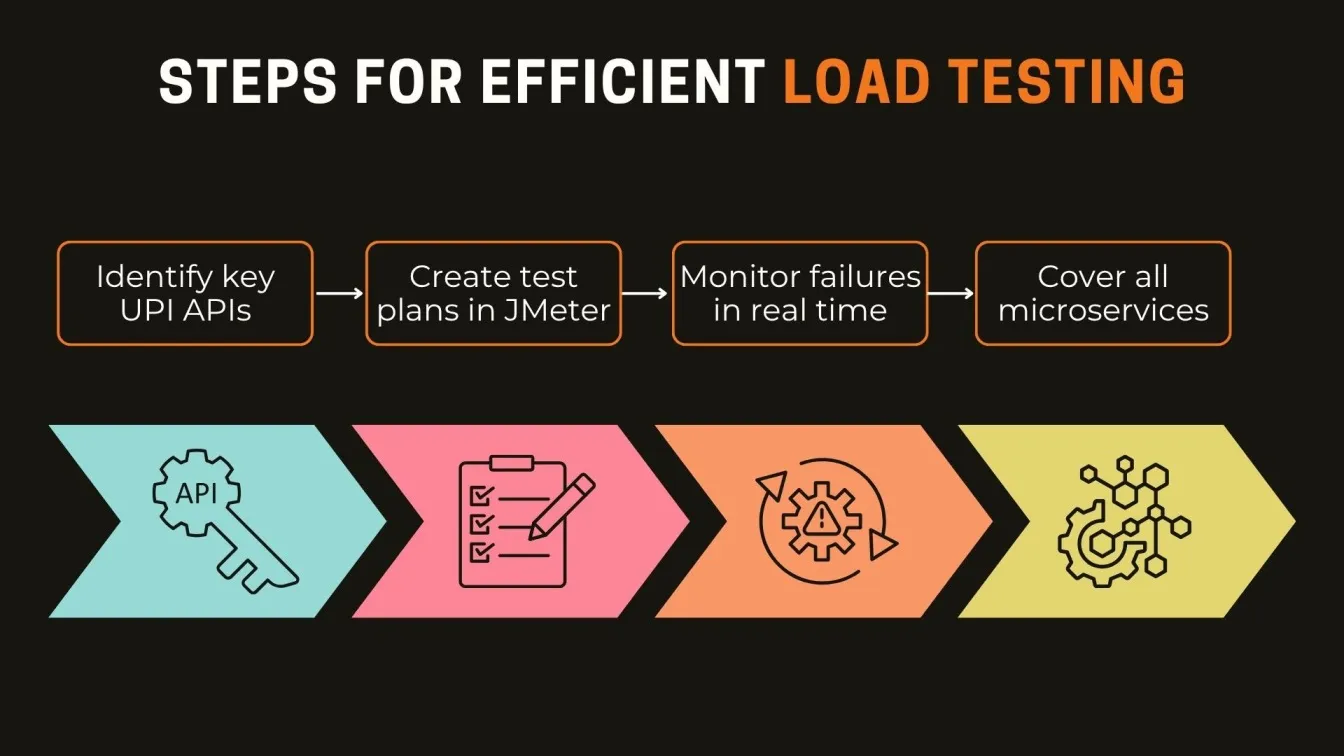
Load testing validates how UPI Lite behaves under concurrent user demand:
- Use leading load testing tools like:
- Apache load testing (Apache JMeter)
- Gatling performance testing
- K6 performance testing
- Azure load testing
- Simulate large-scale api load testing scenarios.
- Run realistic test data via load testing software with recorded UPI transactions.
- Use load testing services to simulate nationwide events.
- Automate with pipelines for continuous testing.
- Define SLA-based thresholds before deployment.
- Monitor test impacts on microservices independently.
- Benchmark historical test results for trend analysis.
- Integrate results with observability platforms.
Effective load testing with tools like JMeter and K6 ensures UPI Lite’s stability, scalability, and performance under real-world transaction peaks.
Best Practices to Ensure Zero Downtime for UPI Lite
Achieving zero downtime for UPI Lite requires proactive strategies like blue-green deployments and automated rollback using CI/CD pipeline tools. Continuous real-time monitoring, combined with network penetration testing services, ensures uninterrupted and secure UPI payment operations.

Zero downtime is achievable with a proactive strategy:
- Integrate testing into every CI/CD pipeline stage.
- Make use of DevOps CI CD pipeline configurations and CI CD pipeline technologies.
- Validate changes in the Azure CI CD pipeline before pushing to production.
- Schedule frequent scalability testing to detect capacity limits.
- Implement real time monitoring for anomaly detection.
- Run network testing tools before nationwide releases.
- Include network penetration testing to ensure security stability.
- Run external network penetration testing simulations.
- Use internal network penetration testing during infrastructure upgrades.
- Partner with network penetration testing services.
- Prepare rollback and blue-green deployment plans.
- Automate backup verification before migrations.
- Use distributed load generation to test geolocation response.
Implementing real-time monitoring, CI/CD integration, and network testing ensures UPI Lite achieves secure, scalable, and zero-downtime digital payments.
Conclusion: Building a Resilient UPI Lite Ecosystem
UPI Lite ensures secure, scalable digital payments with zero downtime. Continuous performance testing in CI/CD pipelines supports high transaction volumes, mobile wallets, QR payments, and cross-border transfers. Trusted by Payment Service Providers like Bank of India, it drives Digital India with fast, reliable transactions under RBI guidelines.
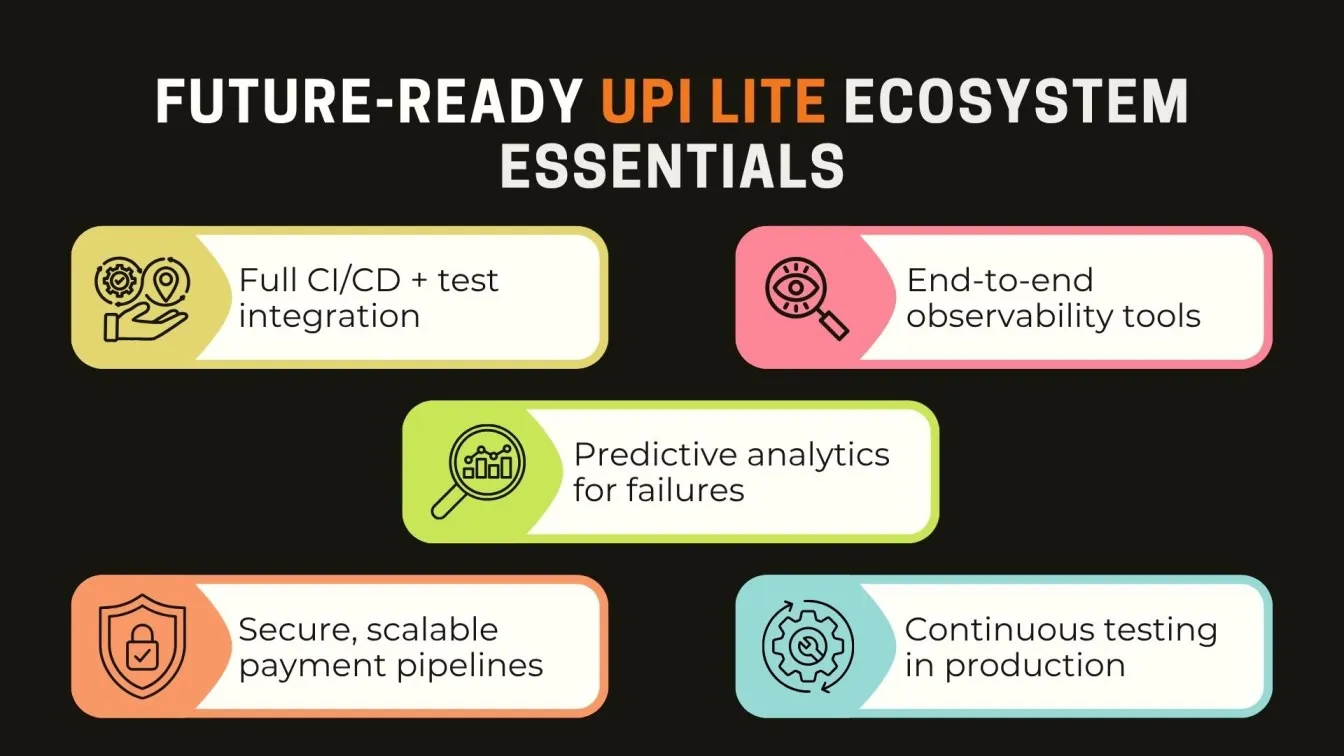
To meet rising user expectations, UPI Lite must deliver fast, secure, and failproof transactions at scale.
- Performance testing is foundational for platforms like Unified Payments Interface (UPI) and Immediate Payment Service (IMPS).
- Use a tool-driven and metrics-based approach to ensure payment system resilience.
- Perform regular load testing and API health checks to maintain smooth transaction flow.
- Integrate performance testing into your CI/CD pipelines to catch issues early.
- Simulate real devices and network conditions for realistic testing scenarios.
- Ensure zero downtime for digital payments, including offline transactions and cross-border transactions.
- Provide consistent access to users' bank accounts with uninterrupted services.
- Optimize transaction processing speed and reliability through continuous testing.
- Use observability and monitoring data to drive continuous performance improvements.
A future-ready UPI Lite ecosystem relies on performance testing, CI/CD automation, and continuous monitoring to deliver secure and zero-downtime digital payments.
People Also Ask
👉 How is performance testing for UPI Lite different from traditional payment systems?
Performance testing for UPI Lite focuses on micro-transactions, offline capabilities, and strict UPI transaction limits, unlike traditional payment systems with larger, less frequent transactions.
👉 What strategies can be tested in UPI Lite to handle unpredictable transaction surges during national campaigns or emergency disbursements?
Strategies like auto-scaling, load balancing, and stress testing help UPI Lite handle transaction surges during national campaigns or emergency disbursements.
👉 What role does real device testing play in validating UPI Lite performance?
Real device testing validates UPI Lite’s performance under diverse network conditions and device types, ensuring reliable digital payments.
👉 How frequently should UPI Lite platforms conduct performance testing?
UPI Lite platforms should conduct performance testing regularly, especially before major events, to maintain zero downtime and high success rates.
👉 How does API rate limiting impact UPI Lite performance during high traffic periods?
API rate limiting can affect UPI Lite by throttling transactions during peak loads, potentially causing delays or failures. Testing these limits helps ensure smooth performance under stress.



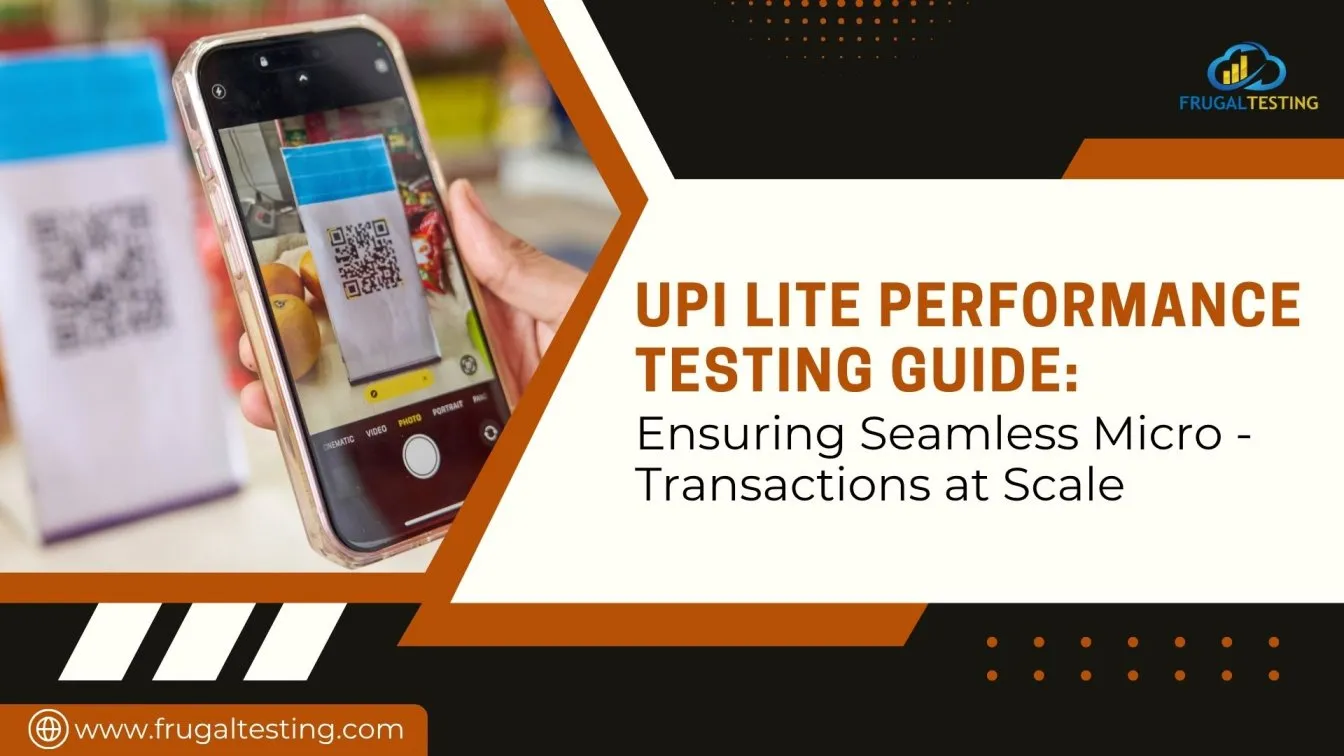

%201.webp)

